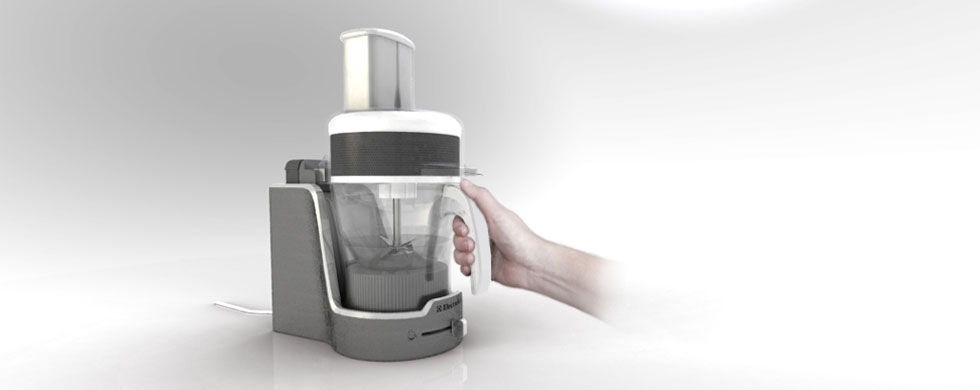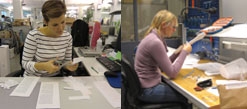Juice Extractor
Development of a differentiated high-end
juice extractor for household use
Summary
This Master Thesis was carried out at the department of Product and Production Development at Chalmers University of Technology by Julia Davidsson and Elisabeth Malm. The project was executed in collaboration with Electrolux and carried out at their office in Stockholm.
The project was initiated to generate a product concept for a new juice extractor. A juice extractor is a kitchen appliance that can extract the juice from many different kinds of hard or soft fruits and vegetables. The most common type on the European market is the centrifugal juicer. It grinds the fruit and spins it in a mesh basket at around 13000 rpm, which allows the juice to be extracted through centrifugal forces. Electrolux has identified a customer opportunity for a juicer that is differentiated and belongs to the market segment of high-end products. The aim of the project was therefore to make use of this customer opportunity.
The end result is a combination product of a centrifugal juicer and a blender. The two techniques complement each other because some fruits and vegetables are better suited for juicing while others are better blended. The blender function can also be used for adding other ingredients than fruit; for example ice, yoghurt and ice cream. This way, the usage range for the product has been extended significantly. The idea arose after visiting juice bars that used both juicers and blenders to create more luxurious fruit beverages. During the first phase of the project, a thorough research was carried out.
Competitor products were tested, existing users were interviewed, a focus group was performed and several juice bars were visited. The collected data was analyzed and sorted in order to be used as a base for the continued work. After a few weeks of idea generation, the concept was selected by means of an evaluation matrix and expertise from Electrolux.
The concept was developed further in terms of functionality, visual expression, handling, safety, materials and manufacturing. Finally, the product concept was evaluated through non-empirical methods as well as customer acceptance tests to make sure that it attracts our intended target group. The project has been supported by contact persons from research and development, industrial design and marketing.
Skriv ut ![]()



 Programansvarig Örjan Söderberg, Tekniklektor, Designer MFA HDK AIVE, Avdelning Design & Human factor, PPU, Chalmers
Programansvarig Örjan Söderberg, Tekniklektor, Designer MFA HDK AIVE, Avdelning Design & Human factor, PPU, Chalmers